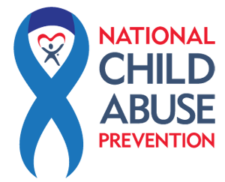Child abuse and neglect are significant public health problems in the United States. Abused children often suffer physical injuries including cuts, bruises, burns, and broken bones. Physical injury is not the only negative impact of abuse and neglect—it can also affect broader health outcomes, mental health, social development and risk-taking behavior into adolescence and adulthood.
There are four common types of abuse.
- Physical abuse is the use of physical force, such as hitting, kicking, shaking, burning or other shows of force against a child.
- Sexual abuse involves engaging a child in sexual acts. It includes behaviors such as fondling, penetration and exposing a child to other sexual activities.
- Emotional abuse refers to behaviors that harm a child’s self-worth or emotional well-being. Examples include name-calling, shaming, rejection, withholding love and threatening.
- Neglect is the failure to meet a child’s basic physical and emotional needs. These needs include housing, food, clothing, education and access to medical care.
Abuse and neglect cause stress that can disrupt early brain development and serious chronic stress can harm the development of the nervous and immune systems. As a result, children who are abused or neglected are at higher risk for health problems as adults. These problems include alcoholism, depression, drug abuse, eating disorders, obesity, high-risk sexual behaviors, smoking, suicide and certain chronic diseases.
Abuse and neglect are preventable
CDC works to stop the abuse and neglect of children before they occur. In doing this, CDC promotes the development of safe, stable and nurturing relationships and environments between children and their parents or caregivers. Children’s experiences are defined through their environments (such as homes, schools and neighborhoods) and relationships with parents, teachers and other caregivers. Healthy relationships act as a buffer against adverse childhood experiences and are necessary to ensure the long-term physical and emotional well-being of children.
Join CDC’s initiative for prevention
Safe, stable, nurturing relationships and environments are essential to prevent child abuse and neglect and to assure children reach their full potential. Essentials for Childhood proposes evidence-based strategies that communities can consider in promoting relationships and environments that help children grow to be healthy and productive citizens so that they, can build stronger and safer families and communities for their children.
At least 1 in 7 children have experienced some type of child abuse and/or neglect in the past year. In 2019, 1,840 children died because of abuse and neglect in the United States.
Abuse is seldom a single event. Rather, it occurs with regularity, often increasing in violence. It crosses all boundaries of income, race, ethnicity and religious faith. An abuser is usually closely related to the child, such as a parent, step-parent or another caregiver.
In homes where child abuse occurs, fear, instability and confusion replace the love, comfort and nurturing that children need. Abused children live in constant fear of harm from a person who is supposed to care for and protect them. They may feel guilt at loving the abuser or blame themselves for causing the violence.
CHILD ABUSE HOTLINE: 1-800-4-A-CHILD (1-800-422-4453). Crisis counselors available 24/7.
Information from https://www.cdc.gov/features/healthychildren/index.html


